Abstract
The electrical source strength for an isolated, active, excitable fiber can be taken to be its transmembrane current as an excellent approximation. The transmembrane current can be determined from intracellular potentials only. But for multicellular preparations, particularly cardiac ventricular muscle, the electrical source strength may be changed significantly by the presence of the interstitial potential field. This report examines the size of the interstitial potential field as a function of depth into a semi-infinite tissue structure of cardiac muscle regarded as syncytial. A uniform propagating plane wave of excitation is assumed and the interstitial potential field is found based on consideration of the medium as a continuum (bidomain model). As a whole, the results are inconsistent with any of the limiting cases normally used to represent the volume conductor, and suggest that in only the thinnest of tissue (less than 200 micron) can the interstitial potentials be ignored.
Full text
PDF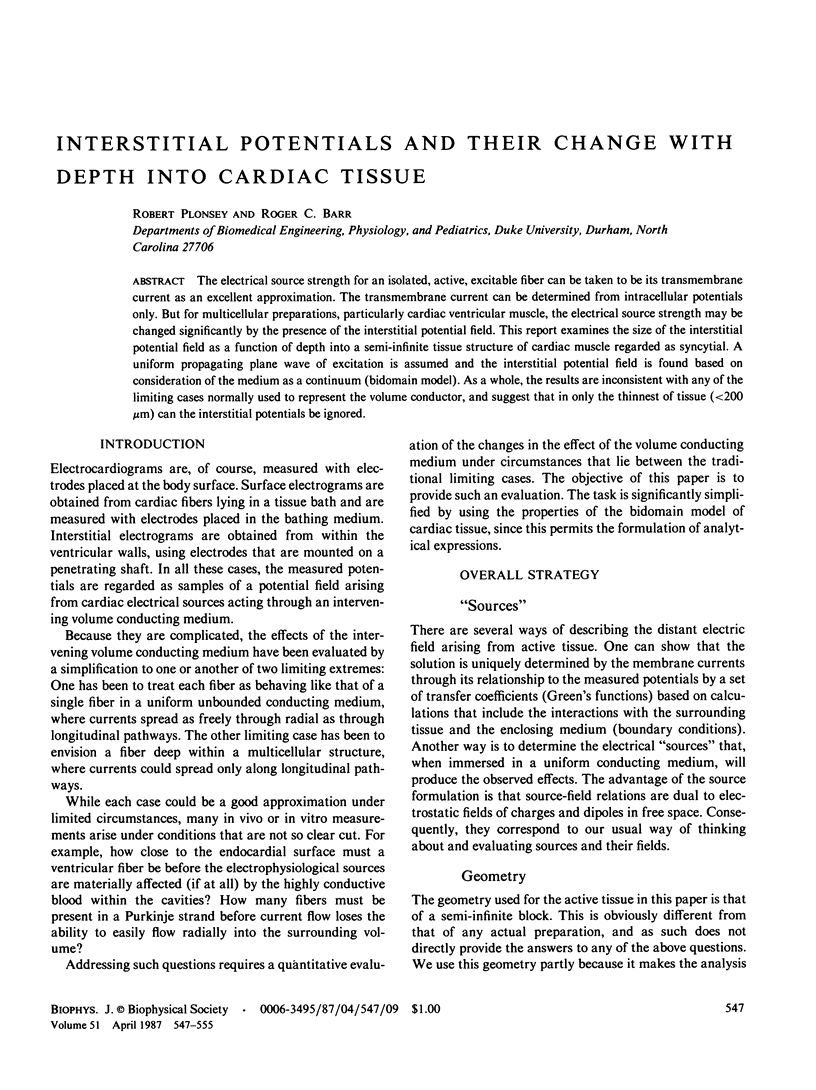
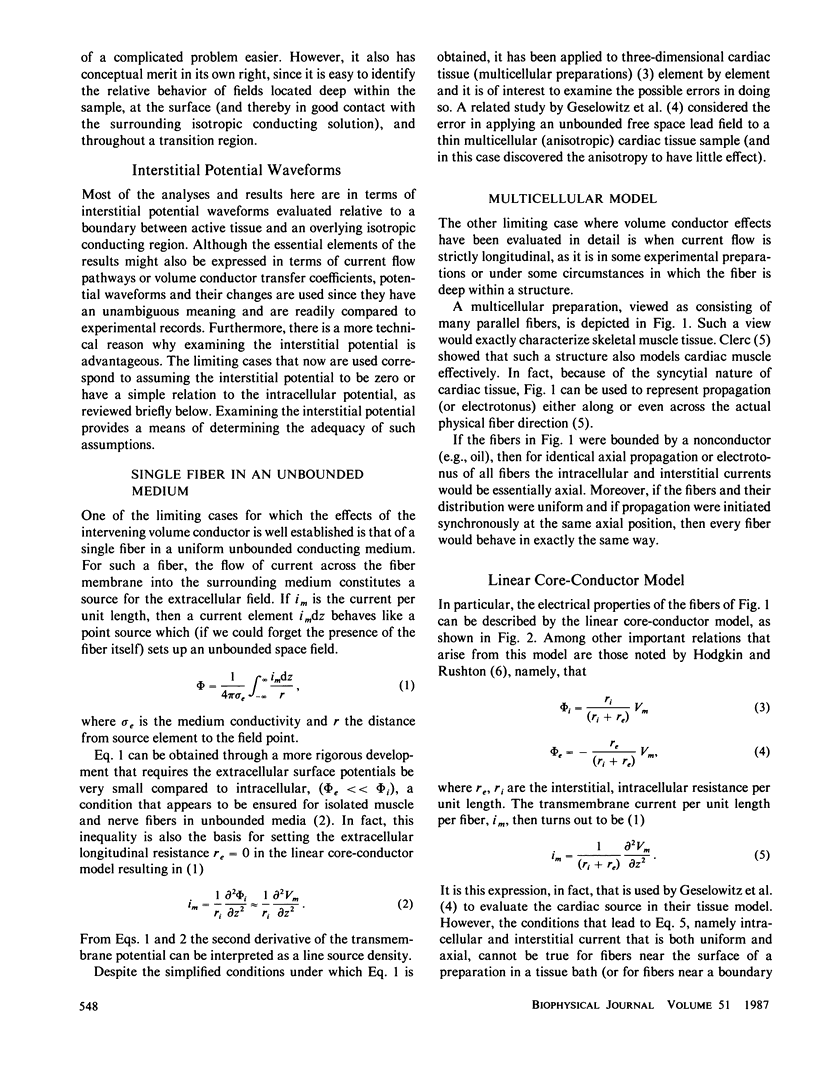
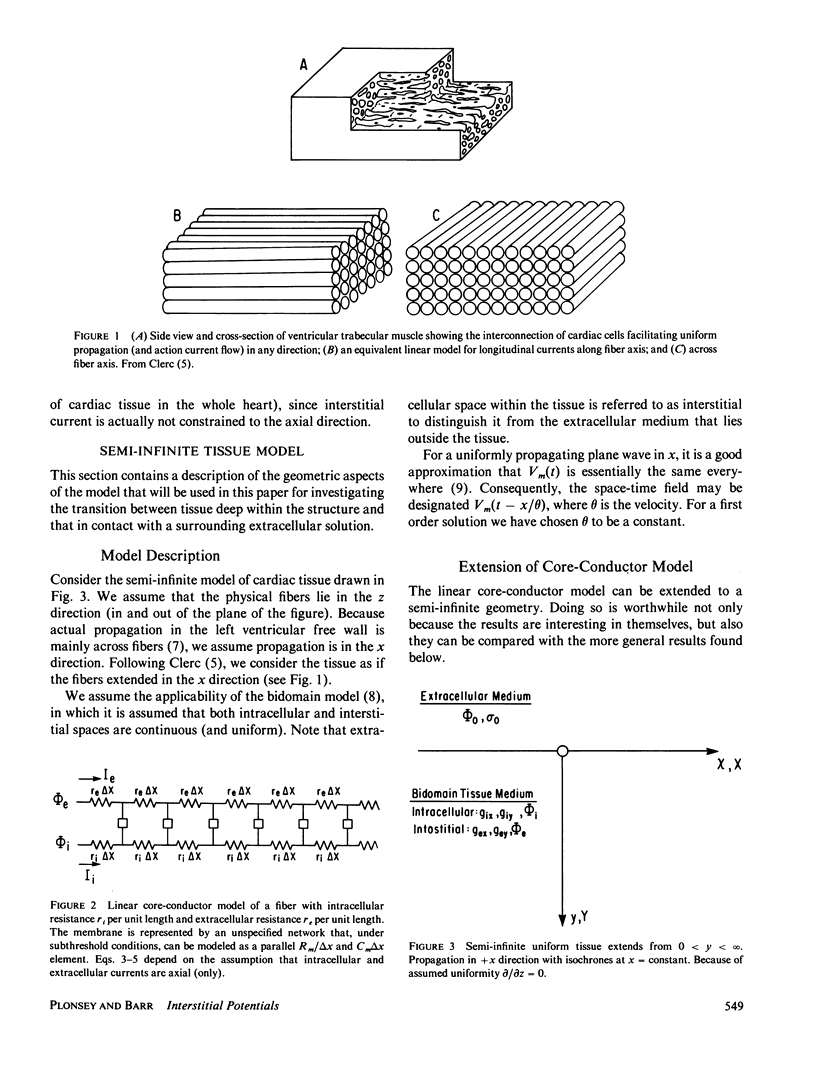
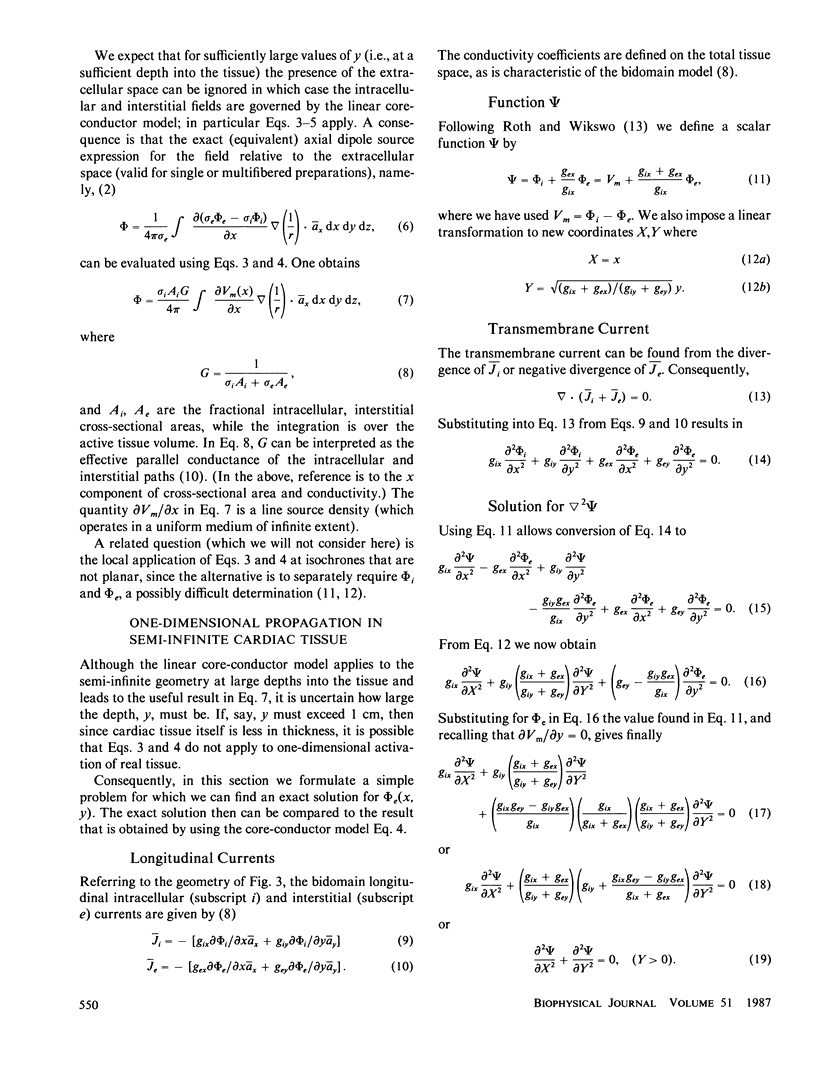
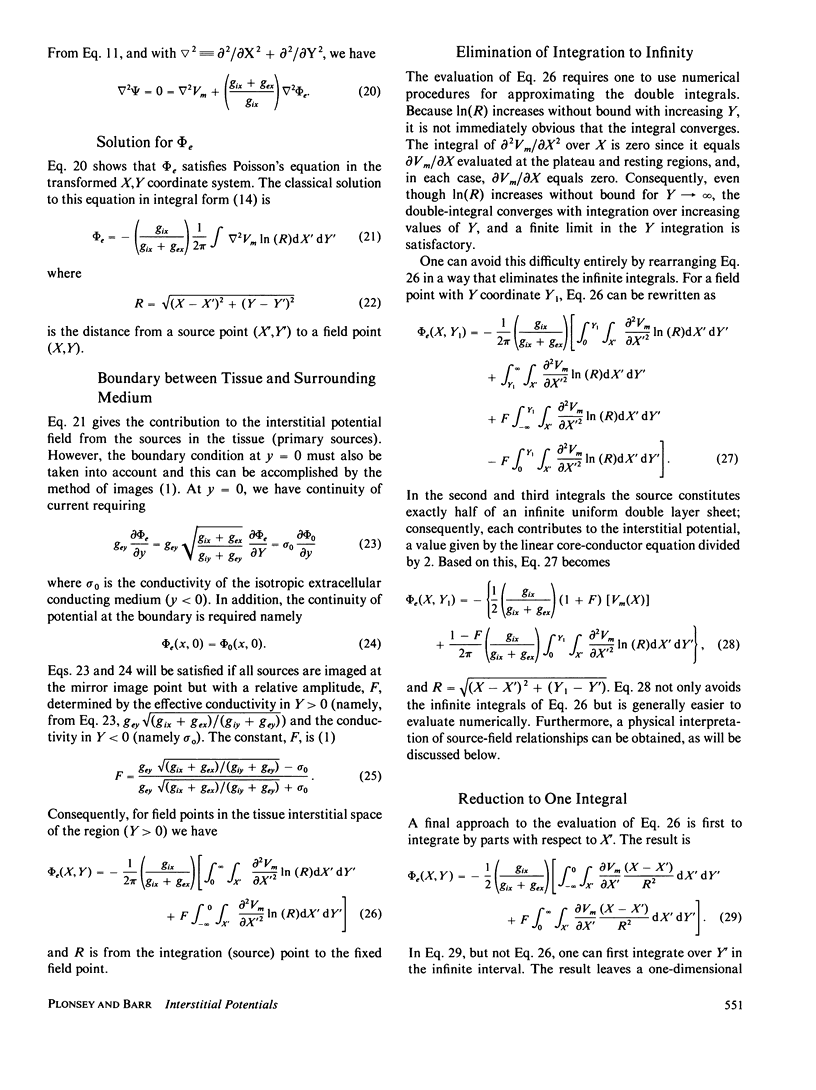
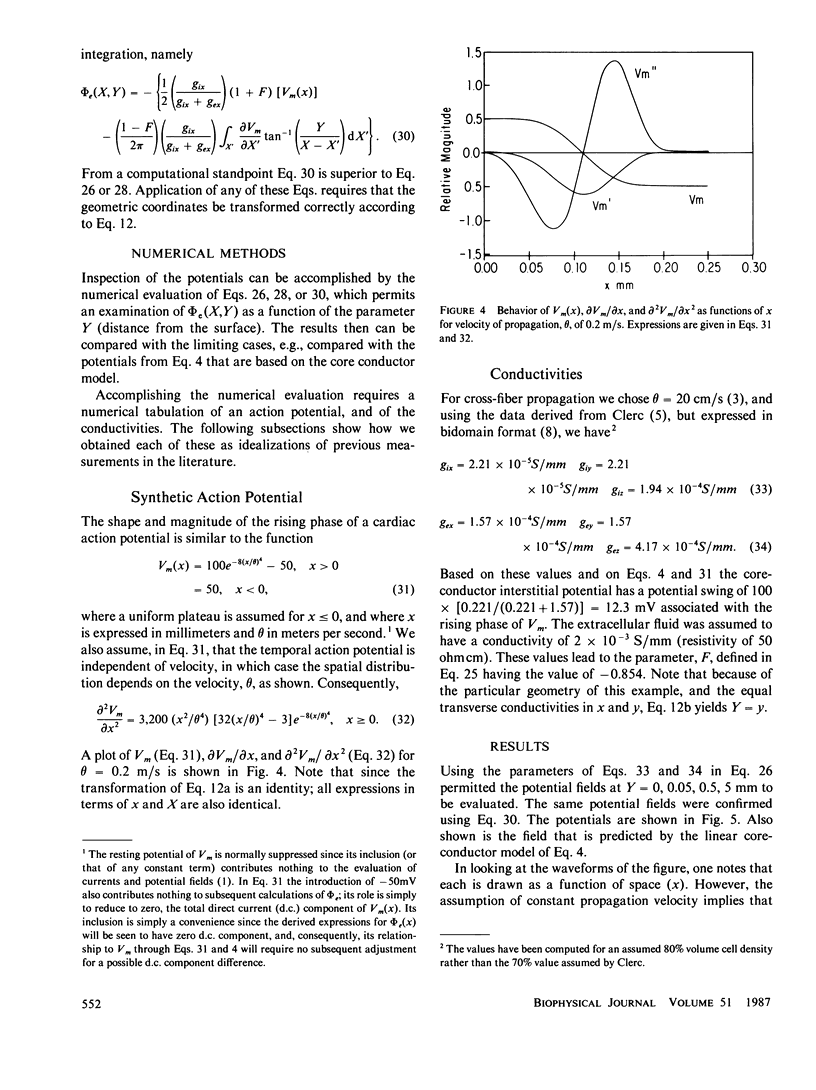
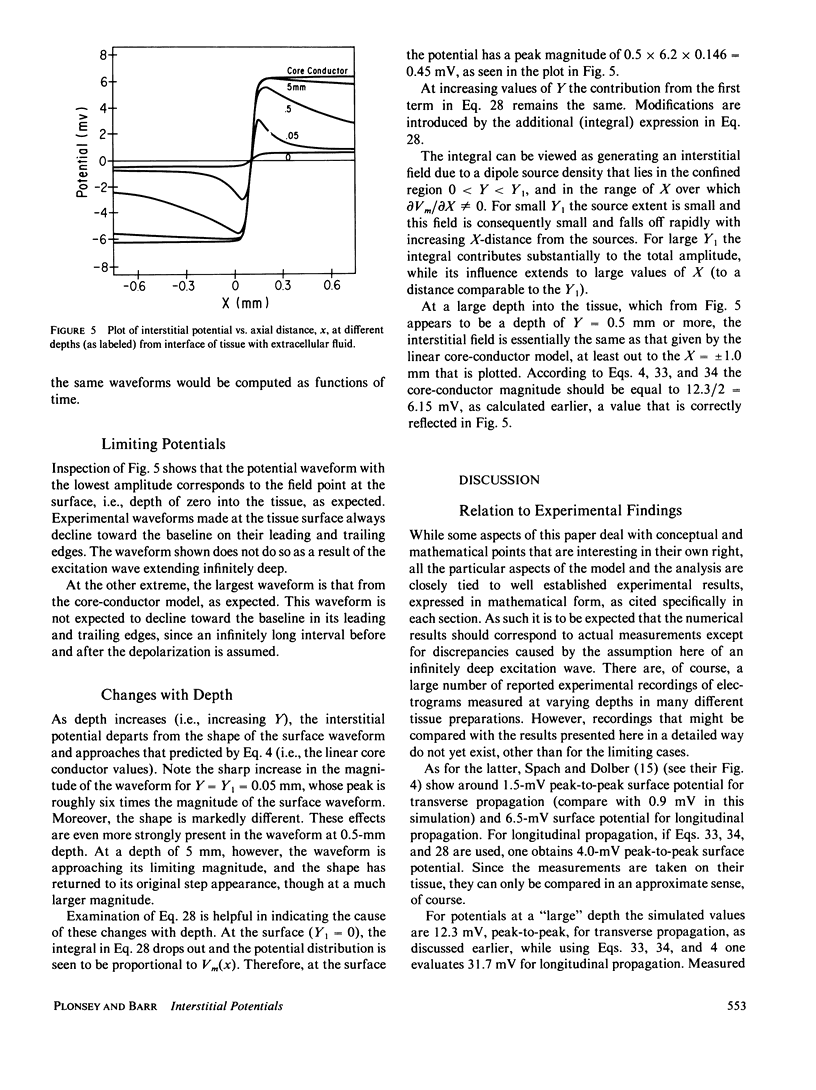
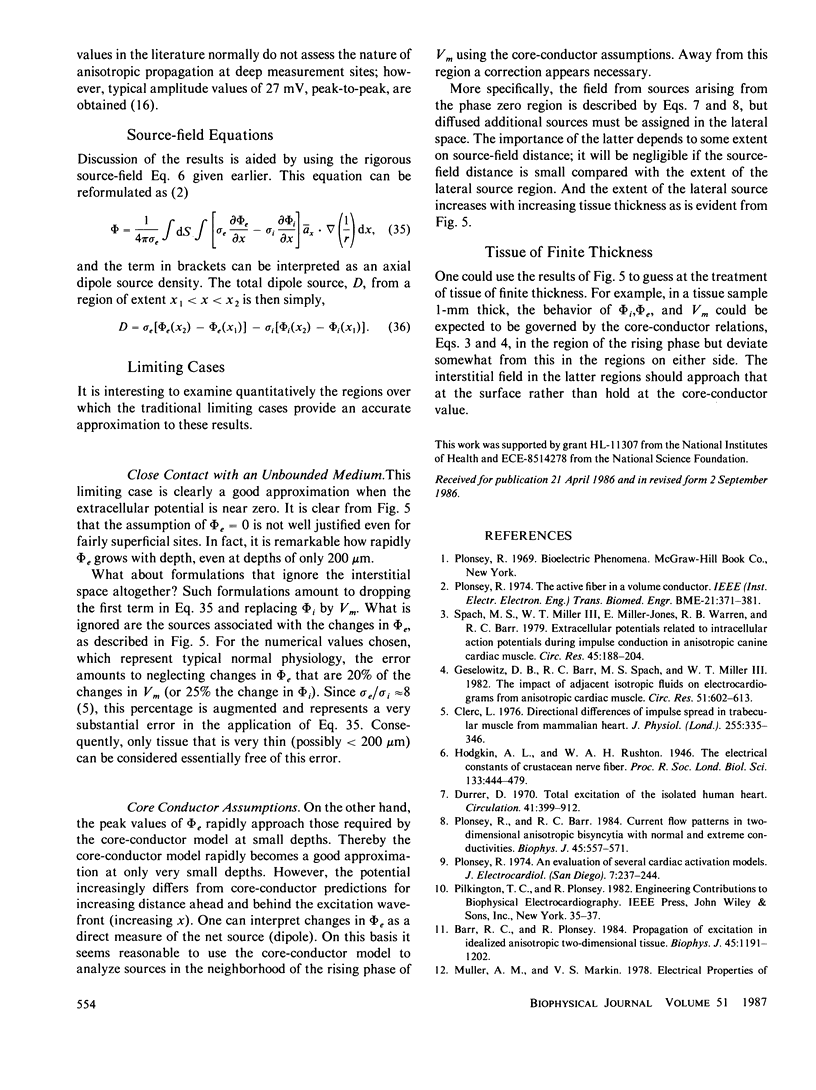
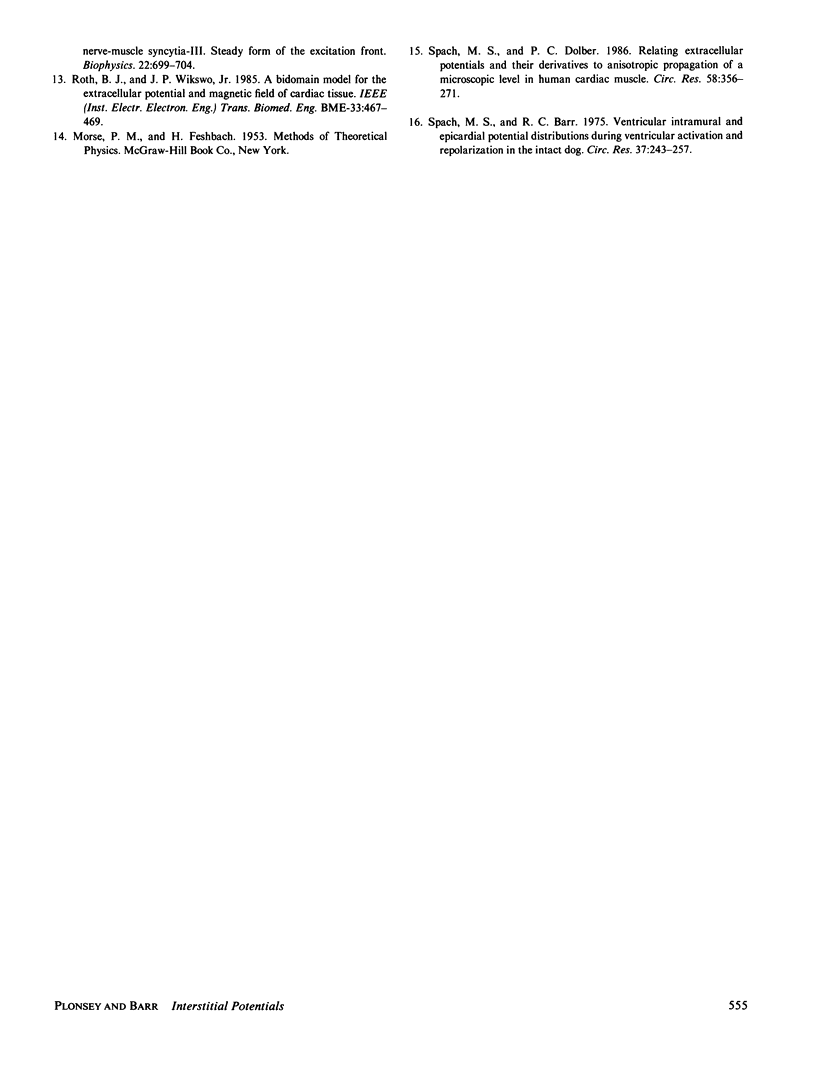
Selected References
These references are in PubMed. This may not be the complete list of references from this article.
- Barr R. C., Plonsey R. Propagation of excitation in idealized anisotropic two-dimensional tissue. Biophys J. 1984 Jun;45(6):1191–1202. doi: 10.1016/S0006-3495(84)84268-X. [DOI] [PMC free article] [PubMed] [Google Scholar]
- Castellanos A., Jr, Chapunoff E., Castillo C., Maytin O., Lemberg L. His bundle electrograms in two cases of Wolff-Parkinson-White (pre-excitation) syndrome. Circulation. 1970 Mar;41(3):399–411. doi: 10.1161/01.cir.41.3.399. [DOI] [PubMed] [Google Scholar]
- Clerc L. Directional differences of impulse spread in trabecular muscle from mammalian heart. J Physiol. 1976 Feb;255(2):335–346. doi: 10.1113/jphysiol.1976.sp011283. [DOI] [PMC free article] [PubMed] [Google Scholar]
- Geselowitz D. B., Barr R. C., Spach M. S., Miller W. T., 3rd The impact of adjacent isotropic fluids on electrograms from anisotropic cardiac muscle. A modeling study. Circ Res. 1982 Nov;51(5):602–613. doi: 10.1161/01.res.51.5.602. [DOI] [PubMed] [Google Scholar]
- Plonsey R. An evaluation of several cardiac activation models. J Electrocardiol. 1974;7(3):237–244. doi: 10.1016/s0022-0736(74)80035-x. [DOI] [PubMed] [Google Scholar]
- Plonsey R., Barr R. C. Current flow patterns in two-dimensional anisotropic bisyncytia with normal and extreme conductivities. Biophys J. 1984 Mar;45(3):557–571. doi: 10.1016/S0006-3495(84)84193-4. [DOI] [PMC free article] [PubMed] [Google Scholar]
- Plonsey R. The active fiber in a volume conductor. IEEE Trans Biomed Eng. 1974 Sep;21(5):371–381. doi: 10.1109/TBME.1974.324406. [DOI] [PubMed] [Google Scholar]
- Roth B. J., Wikswo J. P., Jr A bidomain model for the extracellular potential and magnetic field of cardiac tissue. IEEE Trans Biomed Eng. 1986 Apr;33(4):467–469. doi: 10.1109/TBME.1986.325804. [DOI] [PubMed] [Google Scholar]
- Spach M. S., Barr R. C. Ventricular intramural and epicardial potential distributions during ventricular activation and repolarization in the intact dog. Circ Res. 1975 Aug;37(2):243–257. doi: 10.1161/01.res.37.2.243. [DOI] [PubMed] [Google Scholar]
- Spach M. S., Dolber P. C. Relating extracellular potentials and their derivatives to anisotropic propagation at a microscopic level in human cardiac muscle. Evidence for electrical uncoupling of side-to-side fiber connections with increasing age. Circ Res. 1986 Mar;58(3):356–371. doi: 10.1161/01.res.58.3.356. [DOI] [PubMed] [Google Scholar]
- Spach M. S., Miller W. T., 3rd, Miller-Jones E., Warren R. B., Barr R. C. Extracellular potentials related to intracellular action potentials during impulse conduction in anisotropic canine cardiac muscle. Circ Res. 1979 Aug;45(2):188–204. doi: 10.1161/01.res.45.2.188. [DOI] [PubMed] [Google Scholar]


